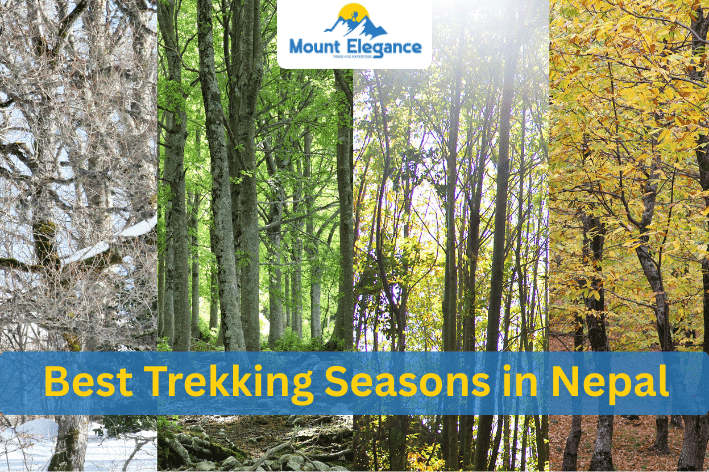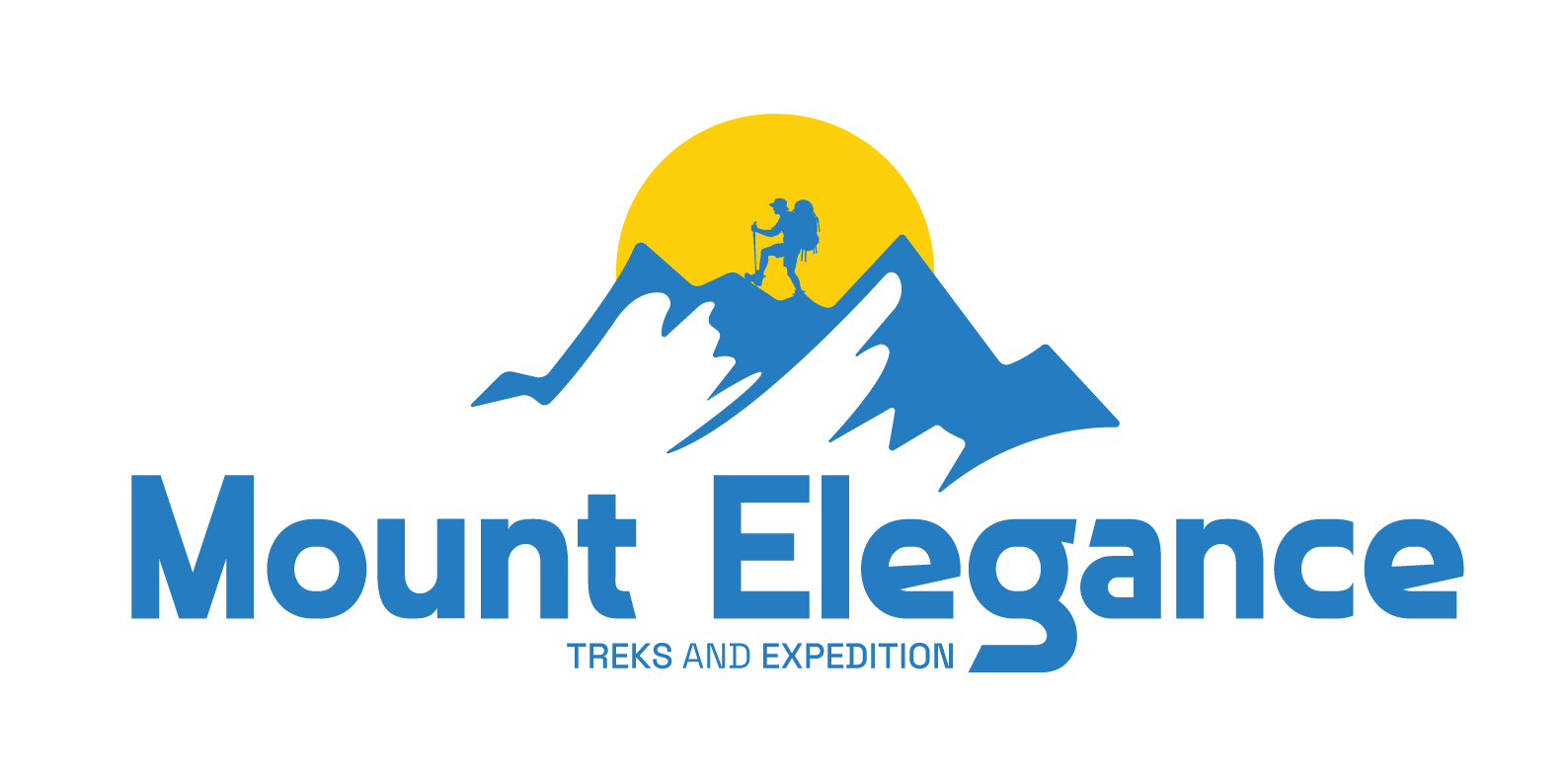Best Trekking Seasons in Nepal: When to Plan Your Adventure

Nepal hosts over 1,000 trekking routes across its Himalayan terrain. The best trekking seasons in Nepal fall in spring and autumn. These periods offer stable weather and clear visibility. At Mount Elegance Treks, we guide trekkers through these optimal times. Moreover, we highlight unique elements like local festivals and biodiversity. This guide covers seasonal details factually. It helps you decide when to trek. Additionally, transition smoothly between seasons for best results. Let’s explore the best trekking seasons in Nepal.
Table of Contents
- Understanding Nepal’s Climate Zones
- Spring (March to May): Ideal Weather and Rhododendron Blooms
- Autumn (September to November): Clear Skies and Stable Conditions
- Summer (June to August): Monsoon Rains and Lush Landscapes
- Winter (December to February): Cold Temperatures and Snow-Covered Trails
- Planning Tips for the Best Trekking Seasons
- Conclusion
Understanding Nepal’s Climate Zones
Nepal spans subtropical to alpine climates within 200 kilometers. Lowlands average 20-30°C annually. However, elevations above 4,000 meters drop below freezing. Monsoons affect 80% of rainfall from June to September. This influences trail conditions greatly. Furthermore, the best trekking seasons avoid heavy rains. Dry periods ensure safer paths. For official climate data, see the Nepal Tourism Board. Understanding zones aids planning.
Spring (March to May): Ideal Weather and Rhododendron Blooms
Spring records temperatures of 10-25°C in trekking areas. Rhododendrons bloom across forests, covering 5,000 square kilometers. Days lengthen to 12 hours of sunlight. Moreover, snow melts on lower trails by April. This opens routes closed in winter. However, late showers may occur in May. Additionally, wildlife activity peaks with migrating birds.
Why Spring Ranks Among Best Trekking Seasons
Spring sees 300,000 annual trekkers due to moderate weather. Avalanche risks drop 50% post-winter. Visibility reaches 100 kilometers on clear days. Furthermore, teahouses operate fully. This supports the best trekking seasons claim. Cultural events like Bisket Jatra add unique festivals. For permits, check Nepal Tourism Department.
Recommended Spring Treks
Book the Everest Base Camp Trek for peak views. The Annapurna Base Camp Trek features floral trails. Additionally, Langtang offers recovery insights post-2015 earthquake.
Autumn (September to November): Clear Skies and Stable Conditions
Autumn attracts 60% of Nepal’s trekkers with zero cloud cover days. Temperatures stabilize at 15-20°C daytime. Post-monsoon air clears pollutants naturally. Festivals like Dashain span two weeks in October. Moreover, harvest seasons provide fresh local produce. This enhances meals on treks. However, book flights early for crowds.
Reasons Autumn is One of the Best Trekking Seasons
Autumn boasts 90% dry days, ideal for photography. Mountain views score highest in global rankings. Additionally, trails firm up after rains. This reduces erosion risks. Unique aspects include Mani Rimdu festivals in Everest region. These make autumn top the best trekking seasons list.
Top Autumn Treks
Try the Manaslu Circuit Trek for uncrowded paths. The Upper Mustang Trek reveals desert-like landscapes. Reference Nepal Tourism Board for updates.
Summer (June to August): Monsoon Rains and Lush Landscapes
Summer brings 1,500mm rainfall in eastern Nepal. Low visibility affects high routes. However, rain-shadow areas like Mustang receive under 300mm. Temperatures hit 25-35°C in valleys. Additionally, leeches appear on forested paths. Yet, greenery explodes, boosting biodiversity views.
Summer as an Off-Season Alternative
Summer falls outside best trekking seasons but suits budget travelers. Permits cost 20% less off-peak. Moreover, waterfalls like those in Helambu flow strongest. Unique rewards include empty lodGES. Transition carefully with ponchos.
Suitable Summer Routes
Choose the Dolpo Trek for dry zones. Tsum Valley provides monk encounters. Consult government sites for alerts.
Winter (December to February): Cold Temperatures and Snow-Covered Trails
Winter drops to -15°C at 5,000 meters. Snowfall averages 50cm in Annapurna. Days shorten to 10 hours. However, pollution-free skies offer stark beauty. Festivals like Losar mark Tibetan New Year. Additionally, lower regions stay trekable.
Winter Trekking Factors
Winter isn’t among best trekking seasons for beginners. Flights delay 30% due to fog. Yet, solitude appeals to experts. Pack down jackets rated to -20°C. Furthermore, unique snow leopards sightings rise.
Best Winter Options
Opt for Ghorepani Poon Hill Trek at lower elevation. Helambu suits short trips. Monitor via official sources.
Planning Tips for the Best Trekking Seasons
Align fitness with season demands. Autumn requires advance bookings. Moreover, insure for altitudes over 4,000m. Use apps like Windy for forecasts. Additionally, hire guides from agencies like us. Respect TIMS permits system. This maximizes safety in best trekking seasons.
Conclusion
The best trekking seasons in Nepal center on spring and autumn for reliability. Each period offers factual advantages and unique cultural ties. Plan based on data shared here.
Ready to trek in the best trekking seasons? Reach out to Mount Elegance Treks. We customize packages with expert guides. Inquire via our contact page or book now for personalized adventures.
